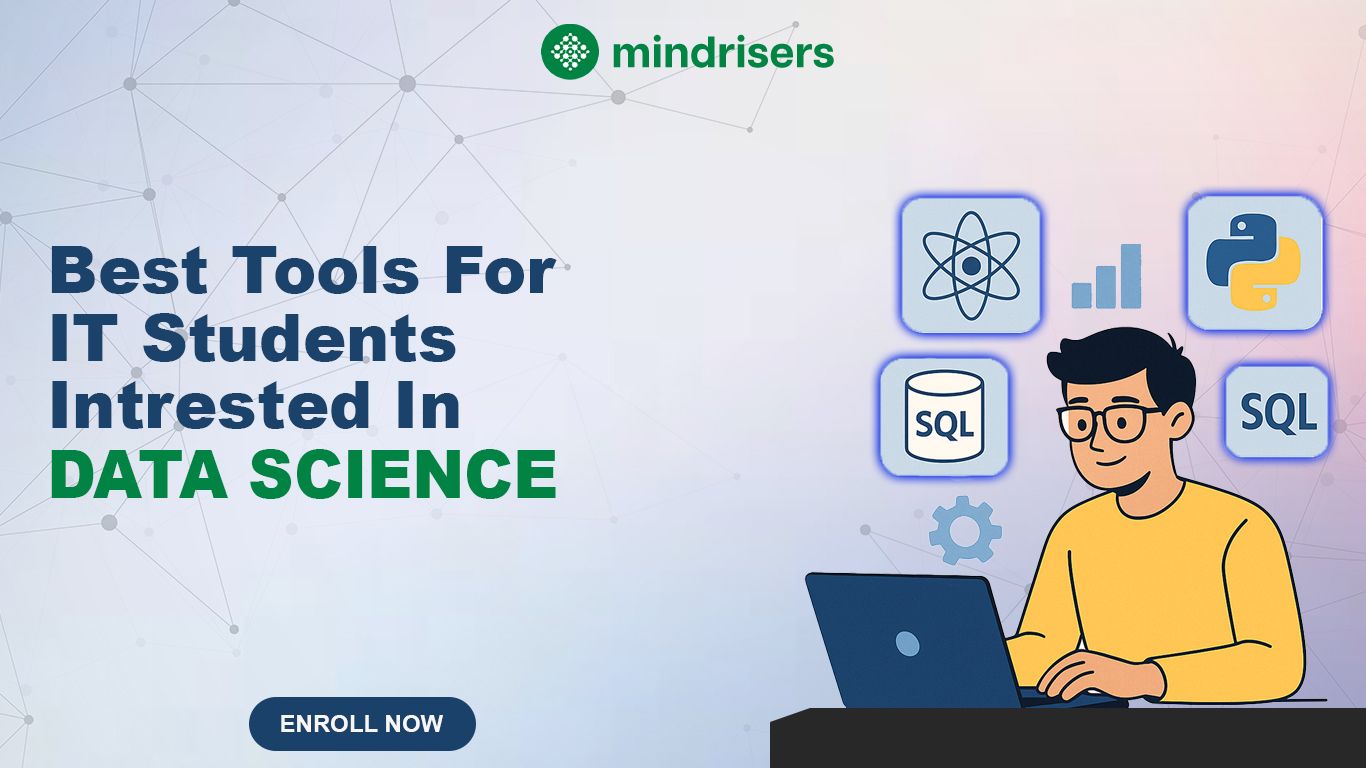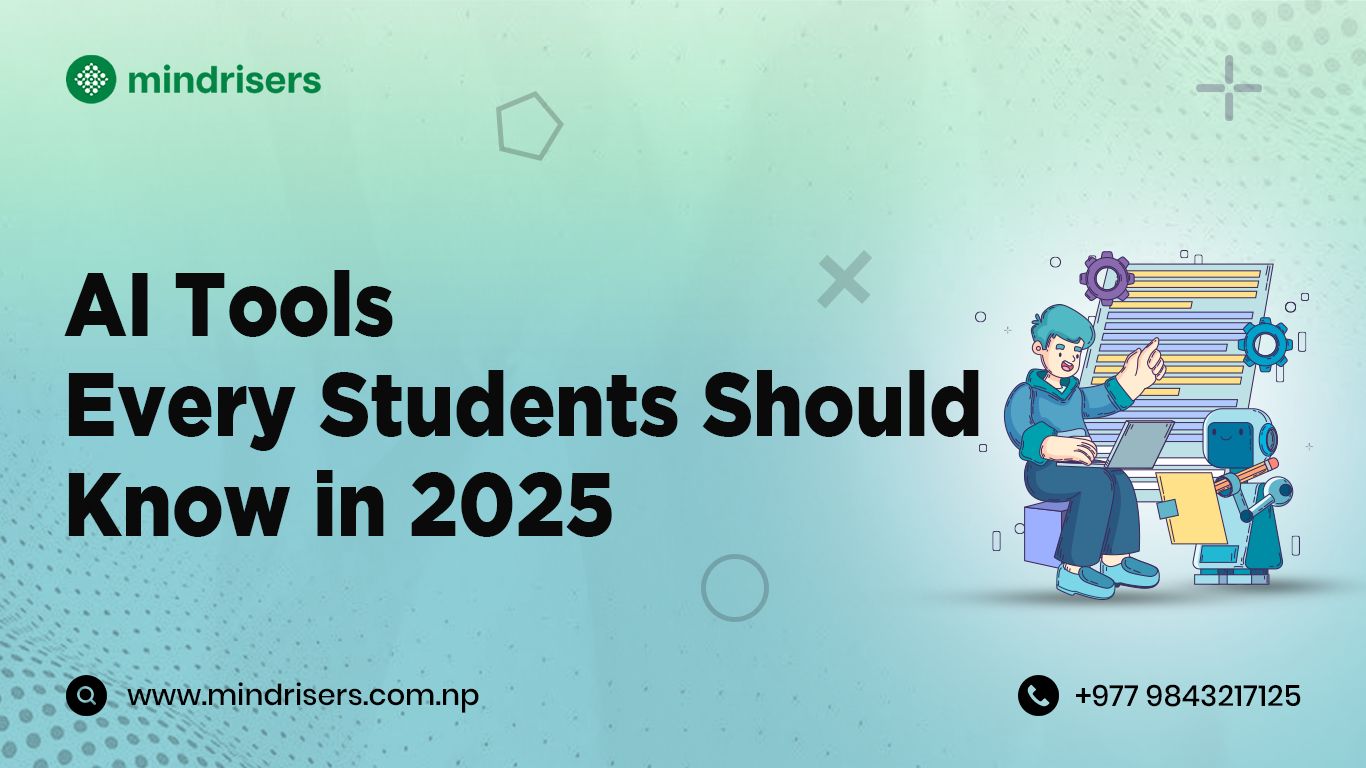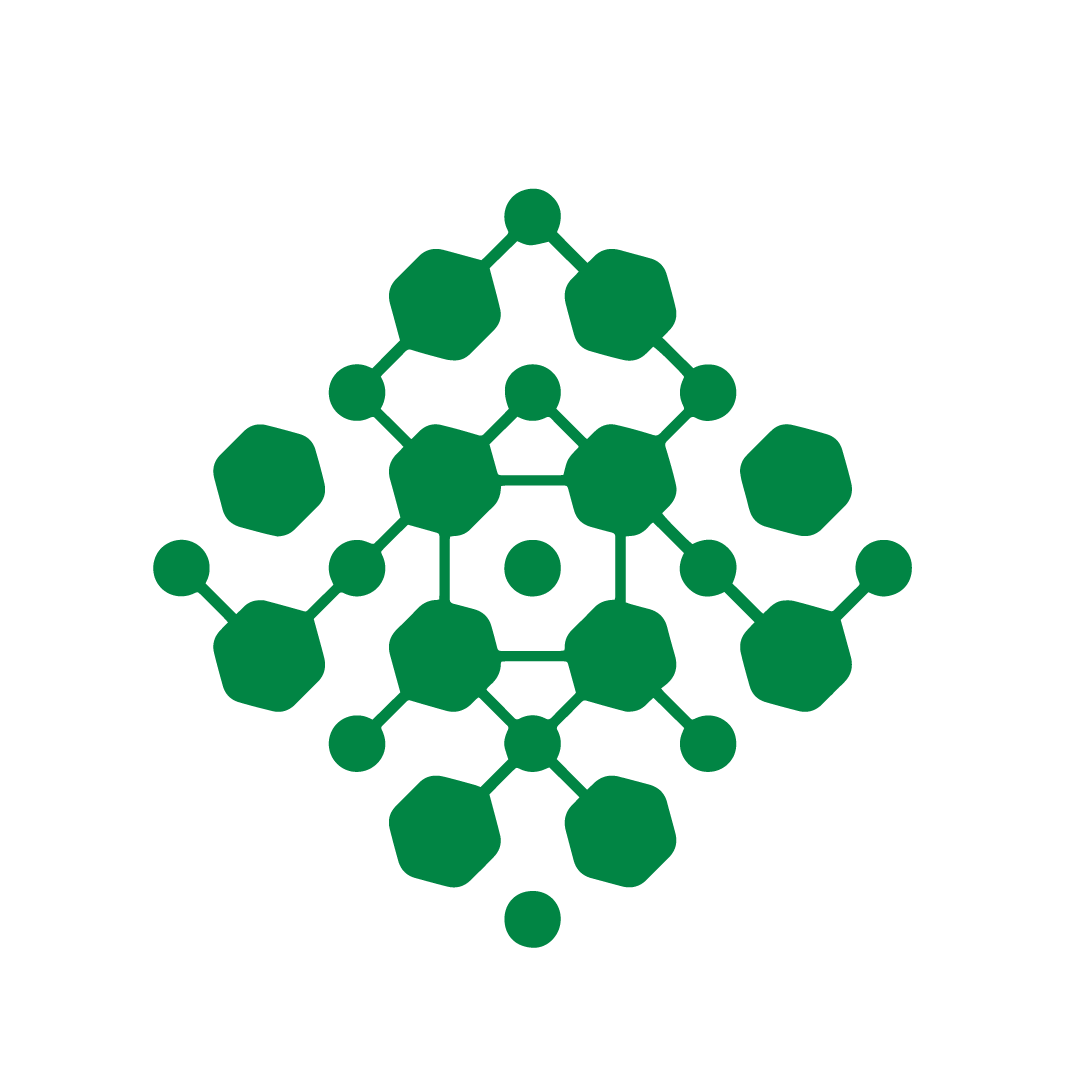
Rupesh Basnet - Author
2025-07-28
If you're an IT student interested in data science, you’ve probably found that having the right tools makes learning a great deal more fun and simpler. Data science covers a wide range of tasks from cleaning messy data to building smart models and creating engaging visuals.
Using the best tools not only helps you develop essential skills but also prepares you for the professional world. For those serious about launching a successful career in this field, Mindrisers Institute offers a comprehensive Data Science course that covers all the practical skills and industry insights you need. With the growing demand for data professionals in Nepal and beyond, this course opens doors to exciting job opportunities and a bright future.
Some of the top tools that every IT student wanting to study data science should experiment with are:
1. Python: Your Go-To Language for Data Science
Python is so popular in data science for a reason. It's easy to learn and filled with libraries that make data analysis and modeling a cinch without needing to stress about the tough coding part.
- Libraries like Pandas and NumPy make handling data simple.
- You can create charts with Matplotlib or Seaborn to better understand your data.
- And once you're ready, Scikit-learn assists you in diving into machine learning.
2. Jupyter Notebook: Write Code and See Results Right Away
Jupyter Notebook is an online notebook where you can write your code, include comments, and see your results right away in one place.
- It lets you test small pieces of code step-by-step, which makes learning less overwhelming.
- You can draw graphs directly in the notebook, making it easy to visualize your data.
- It's great for showing your work to teachers or friends.
3. Google Colab: Utilize Jupyter Notebooks Online for Free
If you have a not-so-powerful laptop or if you need to work from anywhere, Google Colab is a lifesaver.
- It's Jupyter Notebook but on the cloud, so you don't have to install it.
- You get free access to GPUs, which speeds up machine learning tasks.
- It is easy to share your work with other people and collaborate.
4. Kaggle: Learn by Doing Real Projects
Kaggle is a popular website where you can practice data science on real datasets and even compete.
- You can discover interesting datasets on the subjects that interest you.
- See how other people solve problems by looking at their public notebooks.
- Competing makes you challenge yourself and learn faster.
5. Tableau Public: Transform Data into Beautiful Visualizations
Figures do not necessarily speak the complete story by themselves. Tableau Public enables you to create interactive dashboards and charts without programming.
- It is simple to drag and drop for creating visuals.
- You can link it to numerous data sources such as Google Sheets or Excel.
- It's perfect for presenting your work to friends, teachers, or prospective employers.
6. Anaconda: The Easy Way to Set Up Your Data Science Tools
All these tools can be bewildering to install. Anaconda packages everything — Python, Jupyter, and many useful libraries — together so you don't have to deal with compatibility problems.
- Comes with key data science packages pre-loaded.
- Let you manage different project environments easily.
- Contains tools such as Spyder, which is yet another easy-to-use coding environment.
7. SQL: Master the Language of Databases
If you wish to deal with actual data from the world, you'll require SQL. It's the language that is utilized for communicating with databases and retrieving the necessary data for analysis.
- Assists you in swiftly picking up the precise information you need.
- Works well alongside Python and visualization tools.
- An essential skill for data careers.
8. Power BI: Bring Your Data to Life with Reports
Power BI is a handy application from Microsoft for creating interactive dashboards and reports, perfect for a mixture of data science and business intelligence.
- Simple to use with drag-and-drop functionality.
- Integrates nicely with Excel and databases.
- You can insert Python scripts within it for further analysis.
How Machine Learning for Beginners Can Enhance Your Data Science Skills
Machine learning is a critical part of data science that entails educating computers to learn from data and improve over time without being explicitly programmed. If you are an IT beginner, machine learning for beginners can take your overall data science skills to the next level in several important ways:
-
Hands-on Problem Solving:
Machine learning enables you to go beyond theory to implement algorithms in practical scenarios, for example, to forecast customer behavior or identify fraud. This hands-on experience enhances your insight into data patterns and decision-making.
-
Learning Basic Algorithms:
You will be taught algorithms like linear regression, decision trees, and clustering which are the components of the majority of data science models. Understanding how they work enables you to comprehend how data-driven prediction and classification take place.
-
Creating Predictive Models:
Machine learning guides you on how to create models that can predict outcomes from past data a critical competency in data science positions that demand sales forecasting, trend forecasting, or risk assessment.
-
Strengthening Data Processing Skills:
Implementing machine learning workflows requires you to preprocess, clean, and convert raw data, strengthening your data preparation skills that are fundamental to any data science project.
-
Utilizing Trending Tools:
Newbies tend to begin with user-friendly libraries like Python's Scikit-learn that provide pre-existing machine learning algorithms. Knowledge of such tools strengthens your coding skills and sets you up for more advanced projects.
-
Improving Job Opportunities:
Since employers highly seek after machine learning, gaining the skills earlier gives IT students an extra edge for data science internships and job roles.
In brief, learning machine learning from scratch isn't just coding—it's a matter of building a problem-solving aptitude for complex data problems. This foundation empowers IT students to tackle advanced-level data science problems with confidence and opens the door to high-paying career prospects in this rapidly changing field.
Why Python for Data Science Is a Must-Study for IT Students
Python has become the de facto programming language for data science and with good reason. For IT students who are getting started with data science, Python offers an ideal balance between usability and functionality. Here's why it's important to learn Python:
Easy to Learn and Use:
Python has a clear and readable syntax that makes it easy for beginners, thereby allowing IT students to concentrate on data science concepts instead of complicated coding regulations.
Rich Data Science Libraries:
Python has strong libraries like Pandas for data manipulation, NumPy for numerical calculations, and Matplotlib and Seaborn for making informative visualizations.
In-built Machine Learning Libraries:
Libraries such as Scikit-learn provide pre-implemented algorithms for classification, regression, and clustering, allowing students to create machine learning models with ease.
Versatility Across Domains:
Python is not only great for data science but also widely applied in web development, automation, and AI, providing IT students with skills that are valuable across a variety of tech fields.
Solid Community and Support:
Python has a huge global community, and therefore, Python students can benefit from various tutorials, forums, and resources to debug and learn new concepts.
Industry Demand:
Python is highly sought after by employers, so proficiency in Python makes you a stronger applicant for internships and job roles in data science and elsewhere.
Integration with Other Tools:
Python has good integration with other tools like Jupyter Notebook, Google Colab, and SQL databases, which will make your data workflow more effective.
In summary, Python's ease of use, extensive libraries and popularity in the field make it a mandatory programming language to learn for IT students who wish to have a strong foundation in data science.
Common Mistakes IT Students Make When Learning Python for Data Science
Studying Python for data science is fascinating but may be demanding, particularly for IT students who have no prior experience in programming and data. Knowing the typical errors can save you from frustration and allow you to study more efficiently. The following are some pitfalls that many newcomers encounter:
Skipping the Basics:
Jumping directly into advanced libraries without a grasp of Python basics can lead to bewilderment. Get familiar with basic syntax and data structures first.
Ignoring Data Cleaning:
The majority of the students overlook the importance of data cleaning and preprocessing, which is crucial for accurate analysis and modeling.
Not Practicing Enough:
Reading tutorials isn’t enough. Without hands-on coding and building projects, it’s hard to truly grasp Python’s applications in data science.
Overuse of Libraries Without Knowledge:
Relying too heavily on the pre-written functions without knowing what they do can limit your problem-solving skills.
Ignoring Documentation:
Python libraries are accompanied by rich documentation. Not reading it means you will miss out on discovering powerful features and best practices.
Not Using Version Control:
Beginners tend to avoid tools such as Git, which are crucial for code change management and collaboration.
Poor Code Organization:
Writing disorganized, messy code renders debugging and future updates difficult.
By steering clear of these typical errors, IT students develop a solid, hands-on grasp of Python for data science, which makes learning easier and more enjoyable.
Conclusion
For students of IT looking to break into data science, the first crucial step is choosing the right tools. Basics like Python, Jupyter Notebook, and Google Colab provide a great foundation to learn and test yourself on data. Platforms like Kaggle and Tableau Public let you hone your skills on actual projects and visualize results nicely. Meanwhile, learning fundamentals like SQL and getting familiar with business intelligence tools like Power BI will make you shine in today's competitive job market. Knowing the tools is not enough, though regular practice must be undertaken, and projects worked on, with an open mind for learning. Including these best tools in the learning journey will give you confidence, gain a more profound understanding, and you will be well on your way to a successful career in data science.
FAQs
-
What are the best tools for IT students interested in data science?
A few of the best tools are Python, Jupyter Notebook, Google Colab, Kaggle, Tableau, SQL, and Power BI.
-
Which is the best programming language for data science beginners?
Python is the best language for beginners as it is simple to learn and has strong libraries.
-
Do I require a high-performance computer to learn data science tools?
No, cloud platforms like Google Colab enable you to practice without a high-end computer.
-
Do we need prior coding experience to learn data science?
Basic coding skills are beneficial, but numerous easy-to-use tools have made it available for everyone.
-
Can data science be learned free of cost using online resources?
Yes, tools such as Jupyter Notebook, Google Colab, and Kaggle provide free access for students.
-
How important is SQL in data science?
SQL is fundamental to querying and managing databases, a foundational aspect of data science workflows.
-
Do IT students studying data science need visualization tools?
Absolutely, tools like Tableau and Power BI help communicate data insights clearly.
-
As a student, how can I create a solid portfolio of data science?
Engage in competitions and projects on sites such as Kaggle and publish your projects on GitHub.
Recent Post
View All
Generative Engine Optimization (GEO) in 2025 and beyond: A Complete Beginner-Friendly Guide
2025-12-02.547 Views
Complete Roadmap to Become a Full Stack Python Developer
2025-10-14.904 Views
How Local Businesses in Nepal Can Use WhatsApp Marketing Effectively
2025-08-18.1532 Views
AI Tools Every Students Should Know in 2025
2025-08-18.1502 Views
Never miss an Opportunity !
Want to learn TOP 2025 IT Skills ?
We open IT skill classes Monthly in Design, Development, Deployment, Data etc.
Have something to Ask ?
get admission enquiry